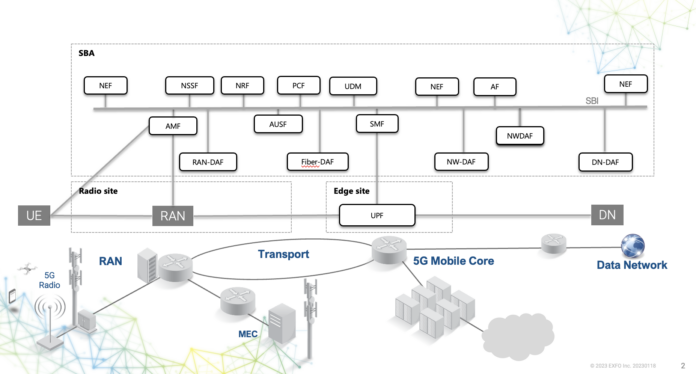With the move to a service-based architecture, what does it take for operators to become cloud native?
With meaningful new 5G revenues failing to materialize with the Non-standalone architecture, operators are now increasingly moving to a 5G Standalone service-based architecture. In this transition, there are a number of key technological and operating changes needed to fully leverage the investment in becoming cloud-native.
Speaking during the recent Telco Cloud and Edge Forum (available on-demand), EXFO Director of Strategic Innovation Sylvian Nadeau described a service-based architecture as “the framework that defines the network functions and their interactions in a 5G network. It is based on the principle of service-oriented architecture that represents a significant departure from the traditional monolithic architecture used in previous generations of mobile networks. The network functions in the 5G SBA are implemented as software services that can be deployed and scaled independently of each other.”
And why should operators do this? “It allows the network operator to optimize the performance and the resource utilization based on the needs of the application and the service that those network functions support.”
With the what and why answered, Nadeau laid out what he sees as the four primary pillars of a service-based architecture
- Cloud-native “which means that with this architecture we need to use microservices and containers to deploy the network functions. This approach provides a greater flexibility, scalability, and agility to the network.”
- Network slicing which “enables the creation of multiple virtual networks on a single network infrastructure. This is critical for customization of network services for different applications that serve different customers.”
- Edge computing to enable “the capability to perform computing closer to the source. “This approach reduces the latency, improve the performance of the application, because more and more applications will require real-time support.”
- Automation; “5G has to come with automation” to manage complexity.
What does it mean to be a fully cloud-native telco?
Operators pursuing the transition to a service-based architecture, 5G Standalone, telco cloud, edge computing and everything that involves will (ideally) become at some point fully cloud native. Beyond the technology piece, Nadeau said, “It requires a cultural shift to embrace the DevOps practices and agile methodology. This includes adopting practices such as infrastructure as code, for example.”
He also provided a big-picture roadmap for telcos to become cloud native. First, containerize network functions so they can be properly scaled upon deployment. Second, define the underlying infrastructure you need to use, including consideration of cloud providers. Finally operators need to implement a DevOps and SecOps mindset—”You need to put in place a CI/CD pipeline…so you can get into this continuous release mechanism.”
Nadeau also highlighted how full-stack service assurance evolves with a service-based architecture dependent on centralized and distributed cloud infrastructure; the key point is that now service assurance needs to cover the underlying IT-like infrastructure as well as everything that traditionally sits in the telco domain.
In terms of deploying network functions on a cloud infrastructure, Nadeau stressed the importance of Kubernetes for the deployment and management of functions and applications. “It gives the ability to orchestrate the network functions, automate the service delivery, enable network slicing, and facilitate edge computing.
For identifying and mitigating problems in the underlying infrastructure, he explained EXFO’s collaboration with Intel that allows for integration of telemetry from Intel’s platform into EXFO’s adaptive service assurance solution. Nadeau said this data integration lets the user “perform a cross-domain [machine learning]-driven analysis that provides the capability to identify the origin of problems…from the underlying infrastructure.” Beyond the infrastructure, EXFO uses passive monitoring, active testing, fiber and RAN monitoring, and analysis of the network topology.
“With the full stack assurance, we actually can address the gap that is created between the cloud and compute infrastructure and the telecom domain,” Nadeau said. “This visibility gap makes it very difficult to correlate quality of experience with this underlying infrastructure. What we need to understand here is the infrastructure becomes a new domain to manage, it has to be monitored and it has now to become part of what we assure to guarantee good network performance.”

